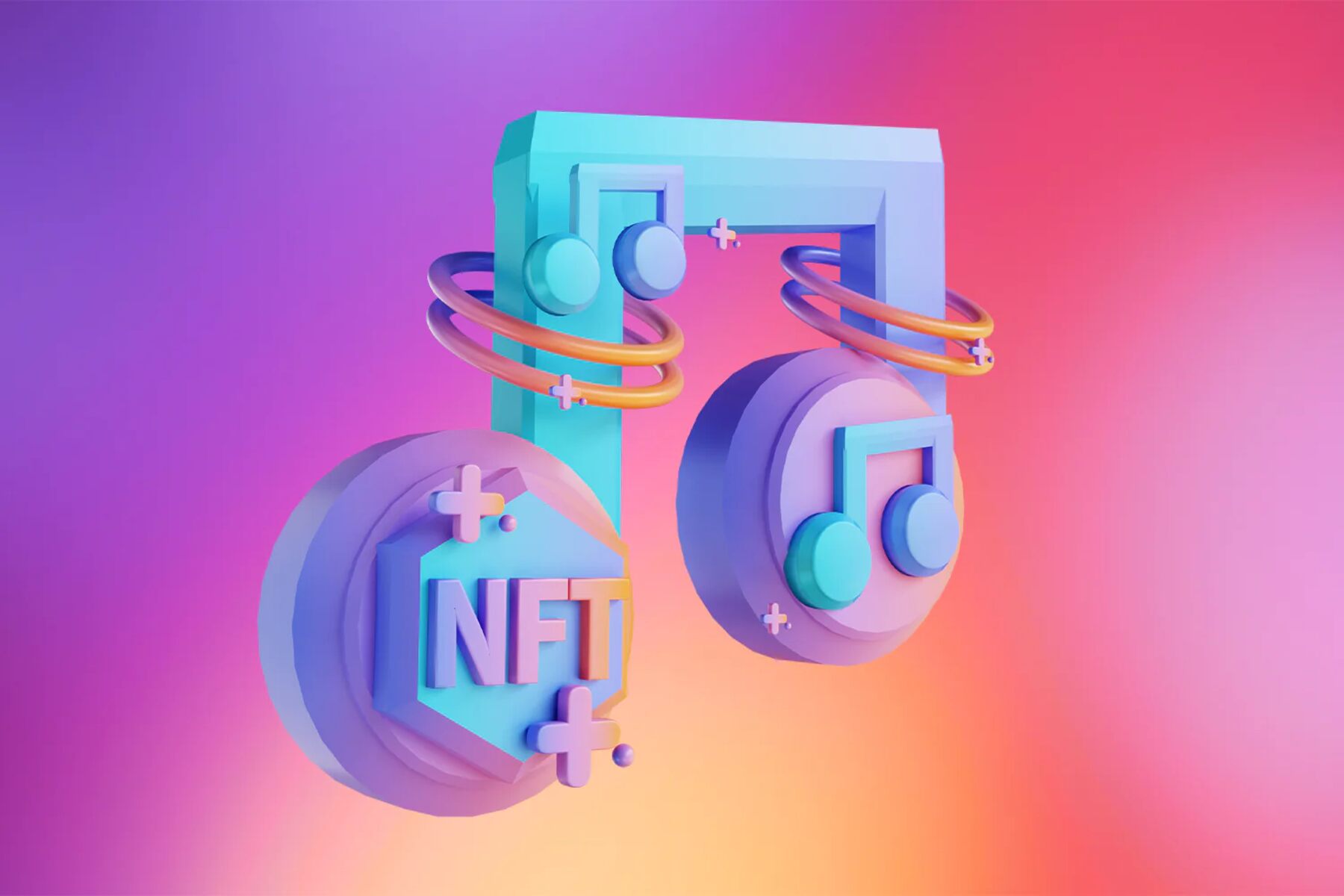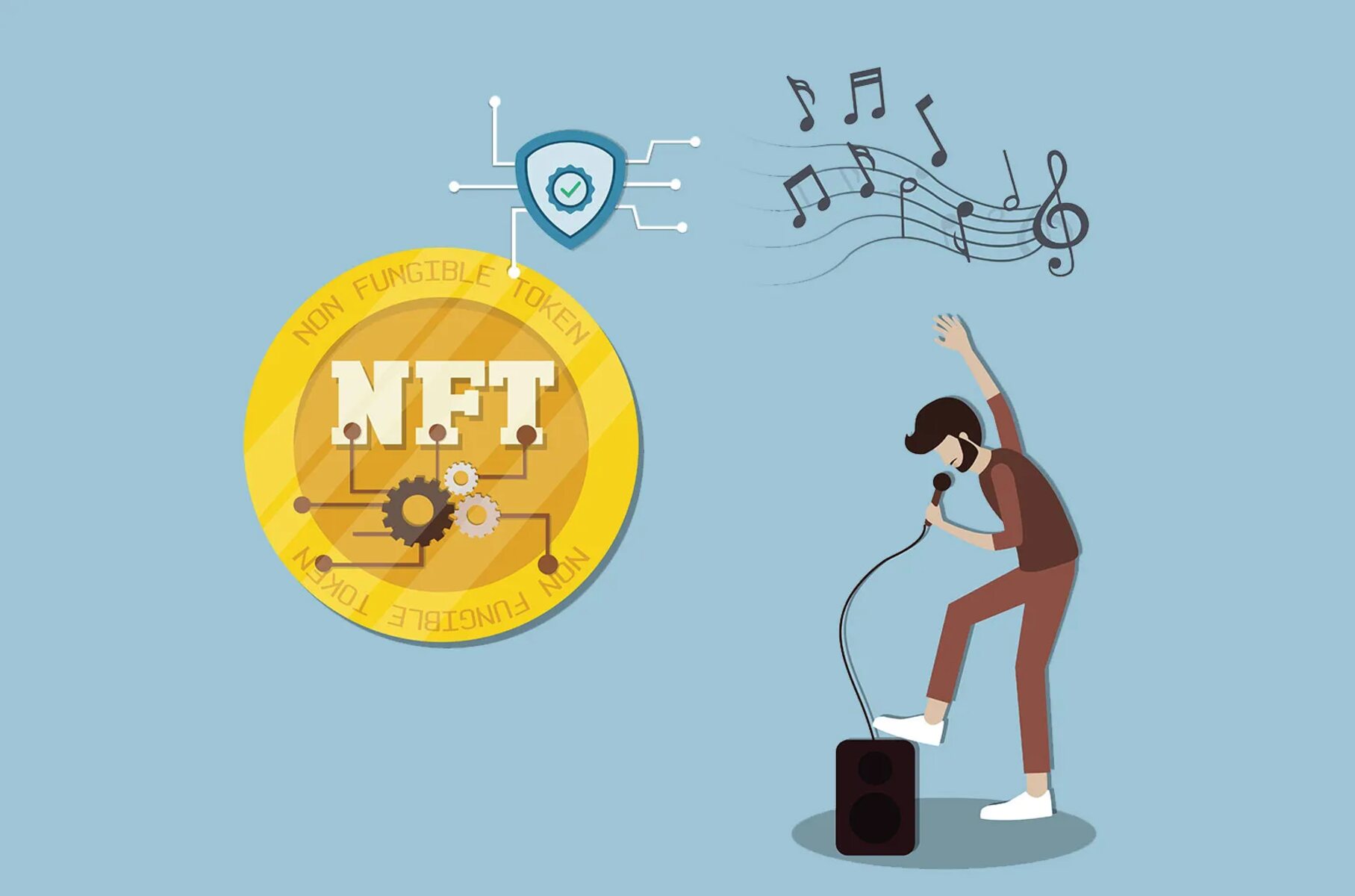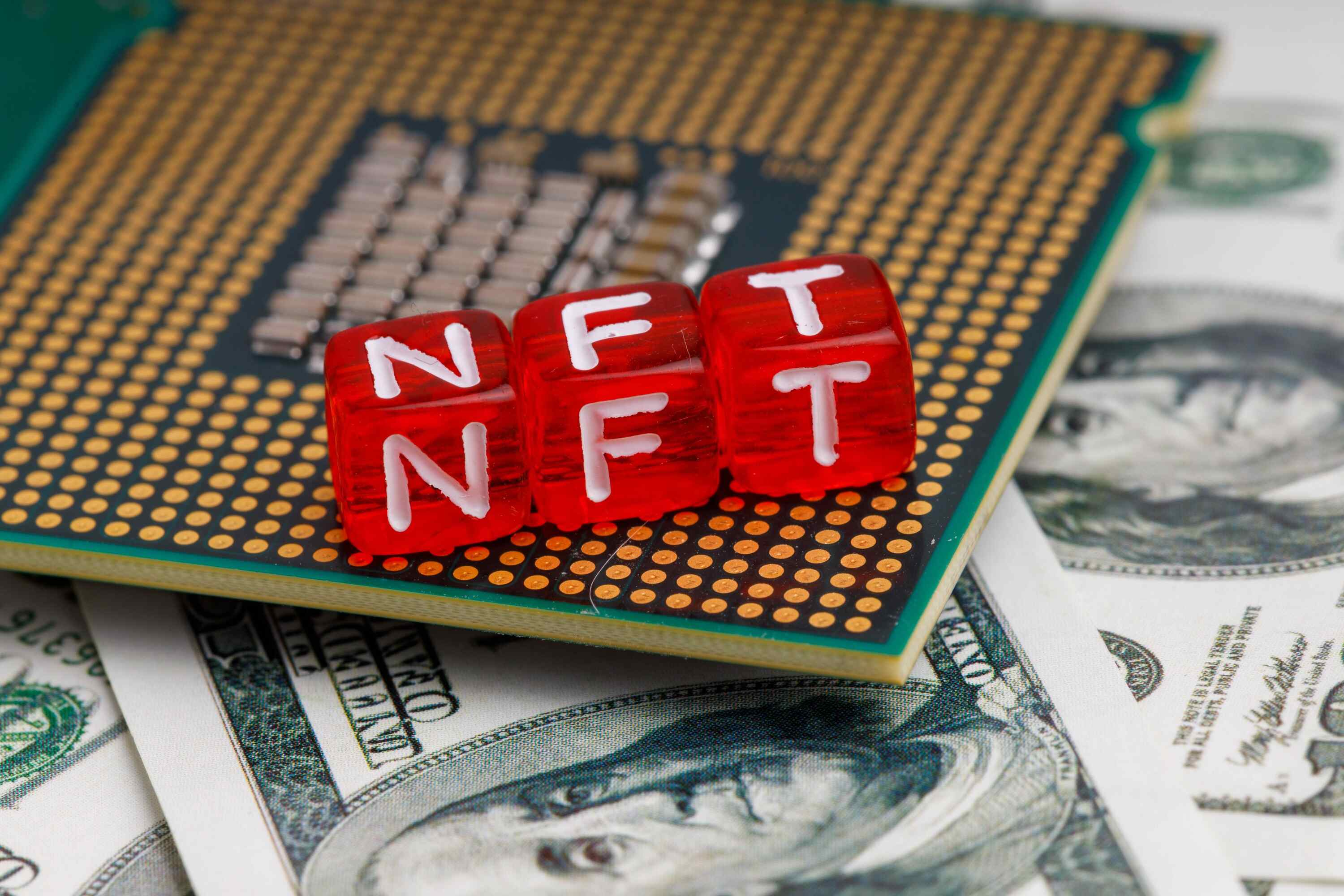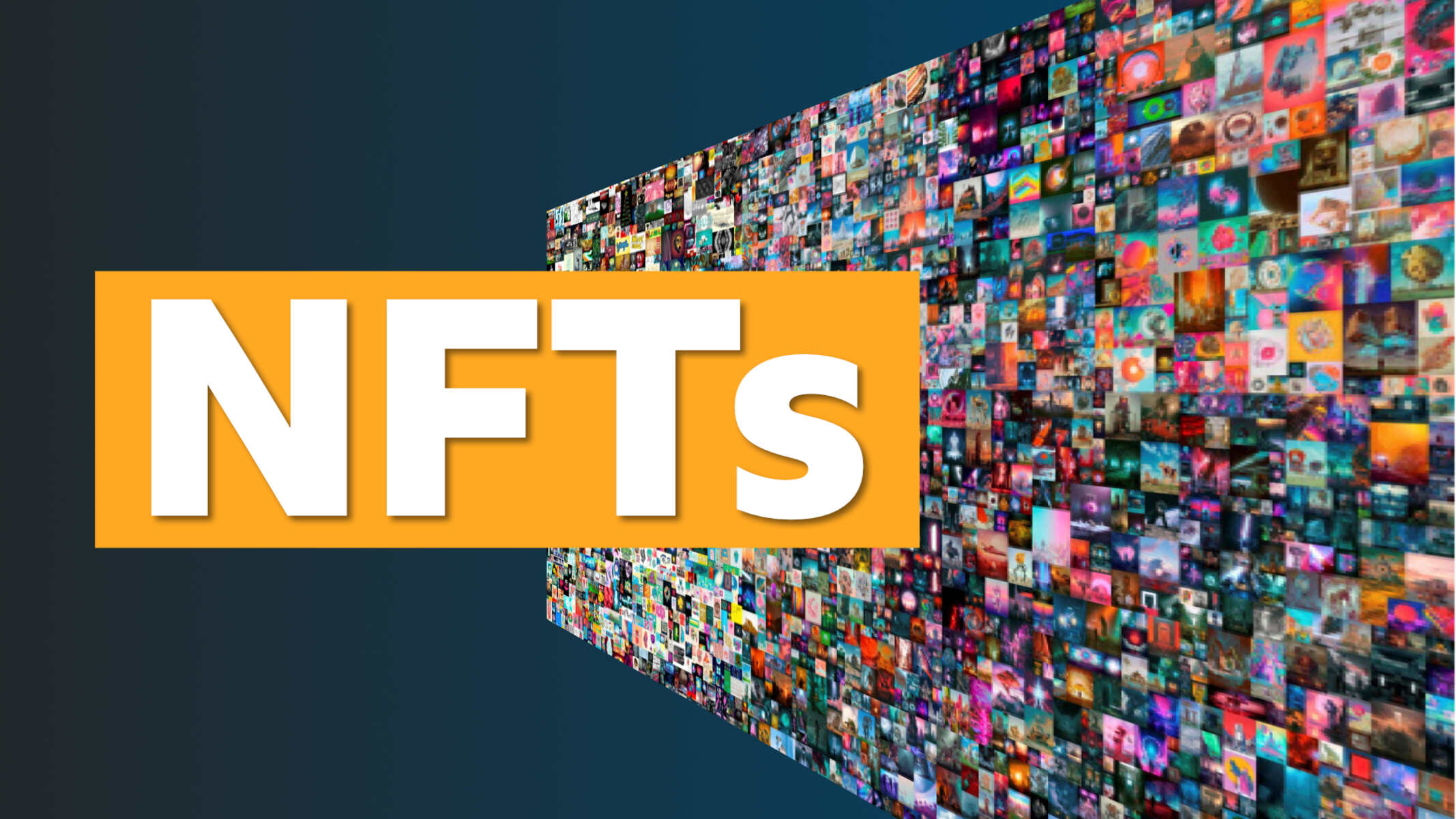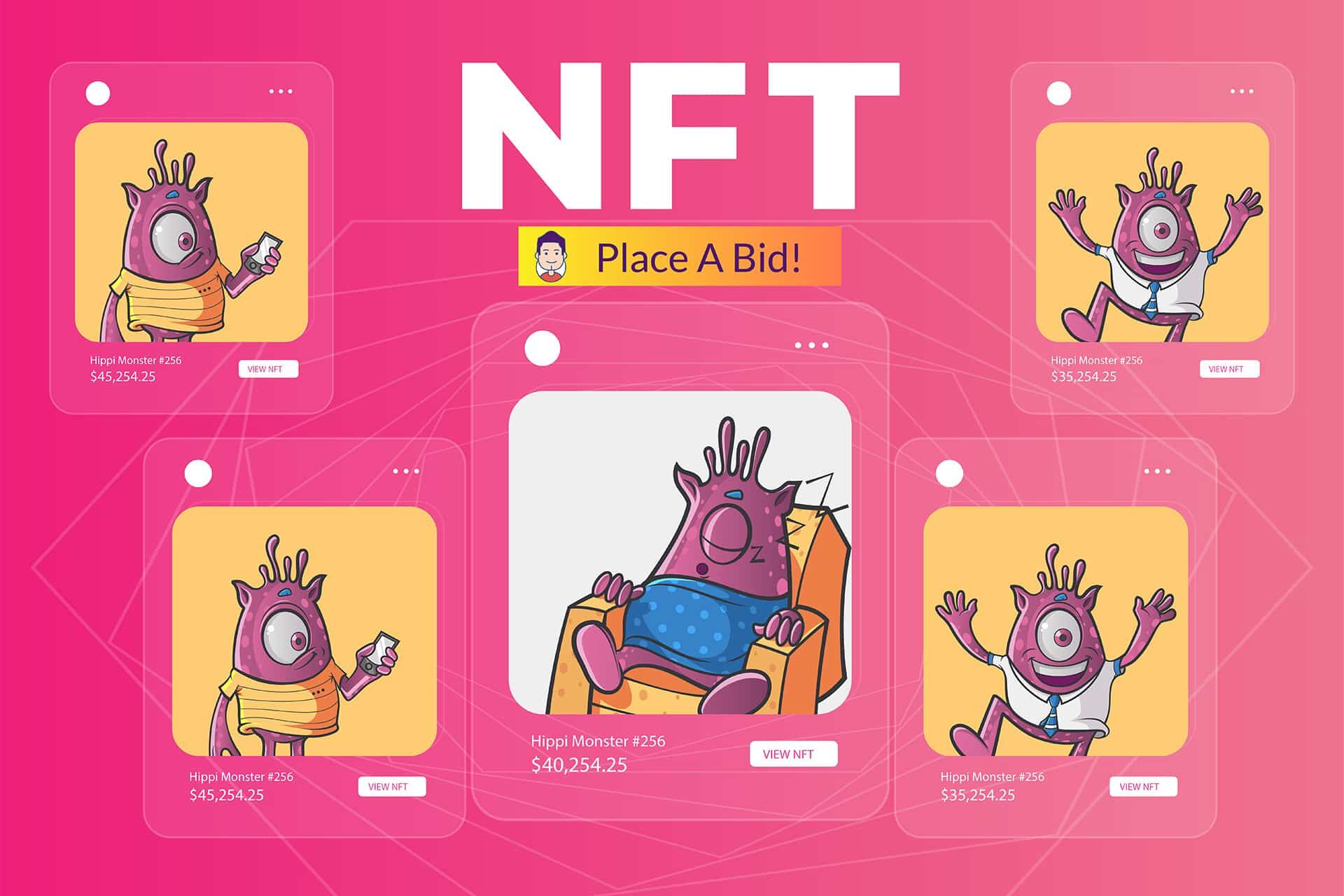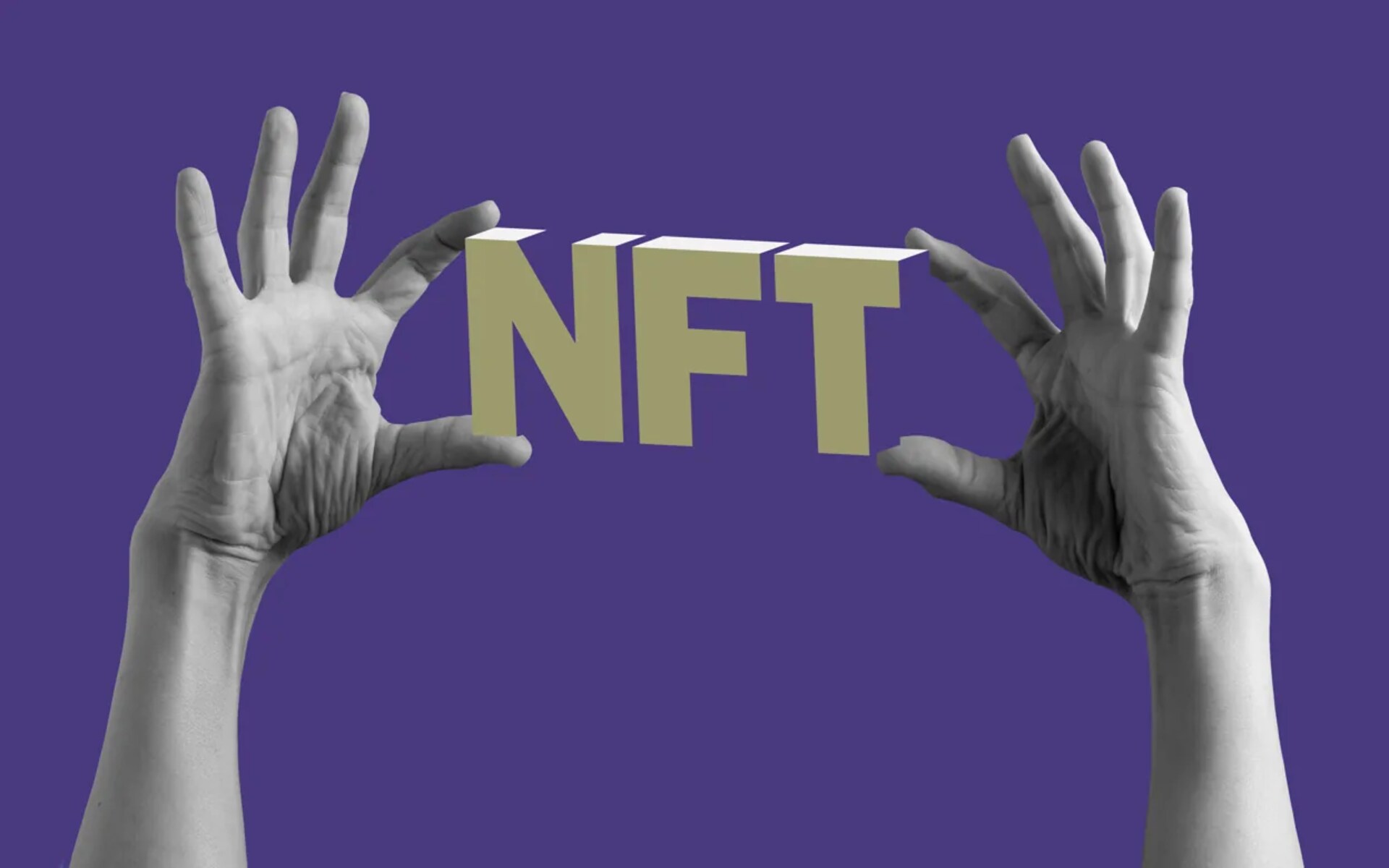Introduction
NFTs, or non-fungible tokens, have been making waves in various industries, including the world of music. These unique digital assets have gained immense popularity and have sparked a newfound interest in the way artists, musicians, and creators sell and monetize their work. With NFTs, musicians have a new platform to showcase their talent, gain exposure, and directly engage with their fans.
So, what exactly are NFTs? In simple terms, they are digital assets that represent ownership or proof of authenticity of a particular item, whether it’s an artwork, a video clip, or in this case, a piece of music. Unlike cryptocurrencies such as Bitcoin or Ethereum, which are interchangeable and have the same value, NFTs are one-of-a-kind and cannot be replicated or replaced.
The concept of NFTs has revolutionized the music industry by allowing musicians to sell limited edition tracks, albums, or even concert tickets directly to fans. This decentralized method of distribution eliminates the need for intermediaries like record labels or streaming platforms and gives artists more control over their own work.
Moreover, NFTs provide a unique opportunity for musicians to connect with their audience on a deeper level. By offering exclusive content or experiences, such as unreleased tracks, backstage passes, or personal interactions, artists can create a sense of exclusivity and loyalty among their fan base.
However, while the rise of NFTs in the music industry has brought countless benefits, it also brings its fair share of challenges and considerations. Issues such as environmental impact, copyright infringement, and the need for education on this new technology need to be carefully addressed to ensure a sustainable and ethical implementation of NFTs in the music world.
In this article, we will explore the world of NFTs in music, delving into their functionality, the benefits they offer, potential challenges, and the legal implications surrounding their use. Through examining real-life examples and discussing future trends, we aim to provide a comprehensive understanding of the impact NFTs have on musicians and the overall music industry.
What are NFTs?
NFTs, or non-fungible tokens, are a type of digital asset that have gained significant attention in recent years. Unlike traditional cryptocurrencies such as Bitcoin or Ethereum, which are fungible and can be exchanged on a one-to-one basis, NFTs are unique and indivisible. Each NFT represents ownership or proof of authenticity of a specific item, whether it’s a piece of artwork, a video clip, or even a piece of music.
The uniqueness of NFTs is achieved through blockchain technology, which ensures that each token is distinct and cannot be replicated. Blockchain acts as a decentralized ledger that records the ownership and transaction history of each NFT, providing transparency and security.
One of the most remarkable aspects of NFTs is their ability to assign value to digital assets that previously had little to no monetary worth. Artists and creators can tokenize their work by converting it into an NFT, allowing them to sell and trade their creations on various NFT marketplaces.
Furthermore, NFTs can contain additional metadata or information about the underlying asset. This metadata can include details such as the artist’s name, creation date, and even unlockable content, enhancing the overall value and collectability of the NFT.
It’s important to note that NFTs do not grant intellectual property rights or copyright ownership to the buyer. Instead, they represent a form of ownership or proof of authenticity. The original creator of the asset still retains the copyright unless specifically transferred or licensed.
The world of NFTs has opened up exciting new possibilities for artists and musicians. By tokenizing their music, musicians can sell limited edition tracks, albums, or even concert tickets directly to their fans. NFTs provide a direct and decentralized method of distribution, eliminating the need for intermediaries and giving artists more control over their own work.
In the next section, we will explore how NFTs are being implemented in the music industry and the impact they have on musicians.
How do NFTs work in the music industry?
NFTs have introduced a revolutionary approach to how musicians sell and distribute their music. By tokenizing their music, artists can create unique and limited edition digital assets that fans can purchase and collect. Let’s delve into the process of how NFTs work in the music industry:
1. Creation of NFTs: Musicians can tokenize their music by converting their tracks, albums, or even concert recordings into NFTs. This involves minting the NFTs on a blockchain platform, which verifies the authenticity and uniqueness of the digital asset.
2. Metadata and Extras: NFTs can include additional metadata such as the artist’s name, album cover art, or even unlockable content like backstage passes or exclusive interviews. These extras enhance the value and collector’s appeal of the NFT.
3. Listing on NFT Marketplaces: Once the NFTs are created, musicians can list them on various NFT marketplaces where collectors and fans can discover and purchase them. These marketplaces act as platforms for buying, selling, and trading NFTs.
4. Auctions and Direct Sales: Musicians have the option to sell their NFTs through auctions or direct sales. Auctions allow fans to bid on the NFT, and the highest bidder becomes the new owner. Direct sales, on the other hand, involve setting a fixed price for the NFT.
5. Royalties and Future Sales: The beauty of NFTs in the music industry lies in the ability to earn royalties from future sales. Artists can program smart contracts to receive a percentage of the sale price whenever their NFTs are resold in the secondary market.
6. Direct Engagement with Fans: NFTs offer a unique opportunity for musicians to connect directly with their fans. Through exclusive content or experiences tied to the NFT, such as backstage access, meet-and-greets, or personalized messages, artists can deepen their relationship with their audience.
It is important to note that while the sale of NFTs provides artists with new revenue streams, it does not replace traditional music distribution methods. NFTs are complementary to platforms like streaming services, allowing artists to explore alternative ways of monetizing their work.
Next, we will explore the benefits that NFTs bring to the music industry and how they empower musicians in new and exciting ways.
Benefits of using NFTs in music
NFTs have brought about numerous benefits for musicians, revolutionizing the way they sell and engage with their fans. Let’s explore some of the key advantages of utilizing NFTs in the music industry:
1. Direct Artist-Fan Relationships: NFTs enable musicians to establish direct connections with their fans. By offering exclusive content or experiences tied to the NFT, such as unreleased tracks, backstage passes, or personal interactions, artists can create a sense of exclusivity and loyalty among their fan base. This direct engagement strengthens the relationship between artists and fans and allows for a more personalized and interactive experience.
2. New Revenue Streams: Traditional music distribution methods often result in artists receiving only a fraction of the revenue generated. NFTs provide a potential solution by allowing musicians to sell their work directly to fans. Artists can set their own prices for NFTs, ensuring they receive a fair value for their music. Additionally, artists can potentially earn royalties from future resales of their NFTs, providing an ongoing revenue stream.
3. Artistic Control: NFTs empower musicians by giving them more control over their work. Instead of relying on record labels or streaming platforms to distribute their music, artists can independently tokenize and sell their tracks or albums as NFTs. This decentralized approach allows artists to set their own terms and retain ownership of their creative output.
4. Exposure and Discovery: NFTs open doors to new audiences and increased exposure for musicians. By listing their NFTs on popular marketplaces, artists can reach collectors, fans, and crypto enthusiasts who may not have discovered their music through traditional means. This exposure can lead to new fans and opportunities for collaborations or performances.
5. Collectibility and Rarity: Collectibility is a significant aspect of NFTs, and musicians can leverage this to create limited edition releases or special collections. By offering unique and exclusive content through NFTs, artists can attract collectors who are willing to pay a premium for rare and valuable music assets.
6. Transparent and Secure Transactions: Blockchain technology provides a transparent and secure method of transacting with NFTs. The blockchain verifies the authenticity and ownership of each NFT, ensuring that both artists and collectors have clear records of their transactions. This transparency instills confidence and trust in the marketplace.
7. Innovation and Experimentation: NFTs encourage innovation in the music industry by challenging traditional business models. Musicians can explore new concepts, experiment with different pricing structures, and offer unique collaborations or partnerships through NFTs. This creativity fosters a dynamic ecosystem where artists can push boundaries and redefine the music industry.
Through these benefits, NFTs offer musicians exciting opportunities for growth, creative expression, and financial independence. However, it is essential to consider the challenges and considerations that arise with the use of NFTs in the music industry, which we will explore in the next section.
Challenges and Considerations of NFTs in Music
While NFTs bring numerous benefits to the music industry, there are several challenges and considerations that need to be addressed. Let’s take a closer look at some of the key areas of concern:
1. Environmental Impact: The energy consumption associated with blockchain and NFT transactions has raised concerns regarding the environmental impact. The process of minting and trading NFTs requires significant computational power, resulting in a substantial carbon footprint. It is crucial for the music industry to explore sustainable solutions and implement eco-friendly practices to minimize the environmental impact of NFTs.
2. Copyright and Ownership: NFTs raise questions surrounding copyright and ownership of music assets. Tokenizing a piece of music as an NFT does not automatically grant ownership or copyright to the buyer. The original creator still retains these rights unless explicitly transferred or licensed. Clear and transparent licensing frameworks are required to protect the rights of artists and ensure proper compensation for their work.
3. High Entry Costs: Participating in the NFT market can involve substantial costs for musicians. Minting NFTs and listing them on marketplaces often require transaction fees and gas fees, which can be prohibitive for artists with limited financial resources. Streamlining the process and reducing the associated costs would enable greater inclusivity for all musicians.
4. Volatility and Market Speculation: The volatile nature of cryptocurrencies and the NFT market can introduce risks for musicians. The value of NFTs can fluctuate rapidly, potentially leading to unpredictable returns on investments. Artists should carefully consider their pricing strategies and educate themselves on market trends to navigate these risks effectively.
5. Scams and Fraudulent Activity: The relatively new and rapidly evolving nature of the NFT market makes it susceptible to scams and fraudulent activity. Artists must remain vigilant and ensure they work with reputable platforms and marketplaces with robust security measures in place to protect their creations and their fans.
6. Tech Literacy and Accessibility: While NFTs provide exciting opportunities, it is essential to address the tech literacy gap and ensure equal access for all musicians. Artists should have access to user-friendly platforms and resources that simplify the process of creating, listing, and selling NFTs, regardless of their technical skills.
It is vital for the music industry to address these challenges and considerations to build a sustainable and ethical ecosystem around NFTs. By doing so, the industry can harness the potential of NFTs while protecting the rights of artists and ensuring the long-term viability and accessibility of this new paradigm.
Examples of Successful NFT Music Projects
NFTs have enabled musicians to embark on groundbreaking projects and forge new paths in the music industry. Here are some notable examples of successful NFT music projects:
1. Kings of Leon: The American rock band Kings of Leon released their latest album, “When You See Yourself,” as an NFT in March 2021. The NFT package included special perks such as limited edition vinyl, front-row concert seats for life, and exclusive audiovisual art. This unique approach allowed the band to engage directly with their fans and offer them a truly immersive and collectible experience.
2. RAC: Grammy-winning artist RAC (Remix Artist Collective) sold a series of NFTs that represented his remixes of renowned songs. Each NFT included the original remix track and exclusive artwork. RAC’s NFT creations gained significant attention in the crypto art community, showcasing how NFTs can elevate the value of remix culture.
3. 3LAU: Electronic music artist 3LAU generated over $11 million in sales from his NFT project called “Ultraviolet.” The project featured previously unreleased music, limited edition vinyl, and access to exclusive events. 3LAU demonstrated how NFTs can provide a direct revenue stream for artists, establishing a new model for music distribution and monetization.
4. Grimes: Canadian musician Grimes sold a collection of digital artworks as NFTs, including exclusive music and visual content. The collection, titled “WarNymph,” generated over $6 million in sales. Grimes utilized the unique features of NFTs, offering her fans an immersive and interactive experience that blurred the lines between music, art, and collectibles.
5. Blau: DJ and producer Blau, also known as Justin Blau, tokenized his entire discography as NFTs. By embracing blockchain technology, Blau enabled fans to own exclusive rights to his music catalog, unlocking special perks and future rewards. This forward-thinking approach not only provided fans with a unique ownership experience but also positioned Blau as a pioneer in the NFT music space.
These examples demonstrate the diverse range of possibilities and innovative approaches that musicians can take with NFTs. From album releases and remixes to visual art and immersive experiences, NFTs enable artists to create new revenue streams and deeper connections with their fans.
While these projects have seen great success, it is important for musicians to carefully navigate the legal and copyright implications surrounding NFTs. Establishing clear ownership rights and ensuring proper licensing are crucial to protect the interests of both artists and fans in the ever-evolving landscape of NFT music projects.
Legal and Copyright Implications of NFTs in Music
The emergence of NFTs in the music industry has raised important legal and copyright considerations. While NFTs offer exciting opportunities for artists to sell and monetize their work, it’s essential to address these implications to ensure a fair and ethical ecosystem. Here are some key legal and copyright considerations related to NFTs in music:
1. Intellectual Property Rights: When musicians tokenize their music as NFTs, it’s important to understand that the NFT itself does not transfer intellectual property rights or copyright ownership. Artists still retain their original rights unless they explicitly transfer or license them. Proper documentation and licensing agreements are crucial to protect the interests of all parties involved.
2. Licensing and Royalties: Artists should ensure they have the necessary licensing rights for the music they tokenize as NFTs. If the music includes samples or collaborations, artists must secure the appropriate licenses and agreements to avoid legal disputes. Additionally, artists should consider including provisions in the NFT smart contract that entitle them to receive royalties from future sales in the secondary market.
3. Attribution and Recognition: Artists should be mindful of ensuring proper attribution and recognition for their work when creating NFTs. Including metadata and clear information about the artist, track, and ownership within the NFT can help maintain transparency and ensure that credit is given where it is due.
4. Copyright Infringement: The ease of reproducing and distributing digital assets raises concerns about copyright infringement. Artists and collectors must be cautious to respect the rights of other creators and avoid using copyrighted materials without permission. NFT marketplaces and platforms should implement robust copyright enforcement measures to protect against infringement.
5. Contractual Agreements: Artists should carefully review and negotiate contractual agreements with NFT marketplaces and platforms. These agreements should address issues such as ownership, licensing, royalties, and dispute resolution to ensure that artists’ rights are protected and properly compensated.
6. International Considerations: NFTs are a global phenomenon, and it’s important to consider the legal and copyright regulations in different jurisdictions. Artists and collectors must understand the laws regarding intellectual property, copyright, and taxation in their respective countries to ensure compliance and avoid legal complications.
It is crucial for artists, collectors, and platforms to seek legal counsel and guidance to navigate the complex legal landscape surrounding NFTs in music. Industry organizations and associations can also play a role in developing best practices and standards to safeguard the rights and interests of all stakeholders involved.
By addressing these legal and copyright implications, the music industry can ensure that NFTs are used ethically, empower artists, and protect the value of creative work in this new digital era.
Future Potential and Trends of NFTs in Music
The future of NFTs in the music industry holds tremendous potential for innovation, creativity, and new opportunities. As this technology continues to evolve, several trends and possibilities are emerging. Let’s explore some of the future potential and trends of NFTs in music:
1. Tokenized Music Experiences: NFTs have the potential to revolutionize the concert and live music experience. Artists can create NFTs that offer exclusive backstage access, VIP experiences, or even virtual reality concert tickets. These tokenized music experiences allow fans to engage with their favorite artists in unique and immersive ways, transcending physical limitations.
2. Fan Ownership and Governance: NFTs can provide opportunities for fans to have a stake in artists’ careers. Through tokenized ownership, fans can actively participate in the success of their favorite musicians, from decision-making processes to gaining exclusive benefits and rewards. This sense of ownership fosters a new level of fan engagement and loyalty.
3. Fractional Ownership of Music: NFTs can facilitate fractional ownership of music assets. This means that multiple investors can purchase shares of an NFT representing a song or an album, allowing them to benefit from revenues generated by streaming, licensing, or merchandise sales. Fractional ownership empowers smaller investors and opens up new avenues for financing music projects.
4. Inclusivity and Empowering Independent Artists: NFTs provide an opportunity for independent artists to bypass traditional gatekeepers and gain direct access to their audience. They can create and sell NFTs representing their music, establishing a direct connection with fans, and monetizing their work without the need for intermediaries. This democratization of the music industry allows more artists to thrive and reach a global audience.
5. Enhanced Fan Engagement and Interactivity: NFTs enable artists to offer unique, interactive, and personalized experiences to fans. Whether it’s virtual meet-and-greets, exclusive content, or customized merchandise, NFTs create a deeper level of engagement and interactivity between artists and their audience. This trend in fan engagement will continue to evolve as technology advances and more possibilities emerge.
6. Integration with Virtual Worlds and Metaverses: The rise of virtual worlds and metaverses presents a new frontier for NFTs in music. Artists can create virtual experiences, performances, and venues within these digital realms, offering fans a completely immersive and interactive music experience. NFTs can serve as access passes or tickets to these virtual events, further blurring the lines between the physical and digital worlds.
These trends and future potentials illustrate the transformative impact that NFTs can have on the music industry. As technology progresses and adoption increases, we can expect to see even more innovative use cases and creative expressions of music through NFTs.
However, it’s important to maintain a critical eye on the environmental and sustainability considerations associated with NFTs, finding solutions that minimize their carbon footprint and ensure long-term viability.
Conclusion
NFTs have ushered in a new era for the music industry, offering exciting opportunities for artists to connect with fans, monetize their work, and push the boundaries of creative expression. By tokenizing their music as NFTs, musicians can create unique and limited digital assets that fans can collect and own. The direct artist-fan relationships fostered by NFTs create a sense of exclusivity and deep engagement, while also providing artists with new revenue streams and greater control over their work.
While the benefits of NFTs in music are evident, there are also challenges and considerations that must be addressed. Environmental impact, legal implications, and accessibility are among the key areas that require attention to ensure a sustainable and inclusive NFT ecosystem. It is essential for artists and industry stakeholders to prioritize environmental sustainability, protect intellectual property rights, and create mechanisms for equal participation and access for all musicians.
Looking ahead, the future of NFTs in music is promising. Tokenized music experiences, fan ownership, and fractional ownership of music assets are just a glimpse of what is possible. The integration of NFTs with virtual worlds and metaverses further expands the potential for immersive and interactive music experiences. Independent artists can thrive by embracing NFTs, reaching global audiences, and bypassing traditional gatekeepers.
As this technology continues to evolve, it is crucial to strike a balance between innovation and responsible implementation. The music industry must navigate the legal and copyright implications surrounding NFTs, ensuring the fair treatment of artists and protecting the value of creative work.
In conclusion, NFTs have opened a world of possibilities for musicians, providing them with new avenues for creativity, fan engagement, and revenue generation. By embracing the potential of NFTs and addressing the associated challenges, the music industry can embark on a transformative path, empowering artists and reshaping the way music is created, accessed, and experienced.







